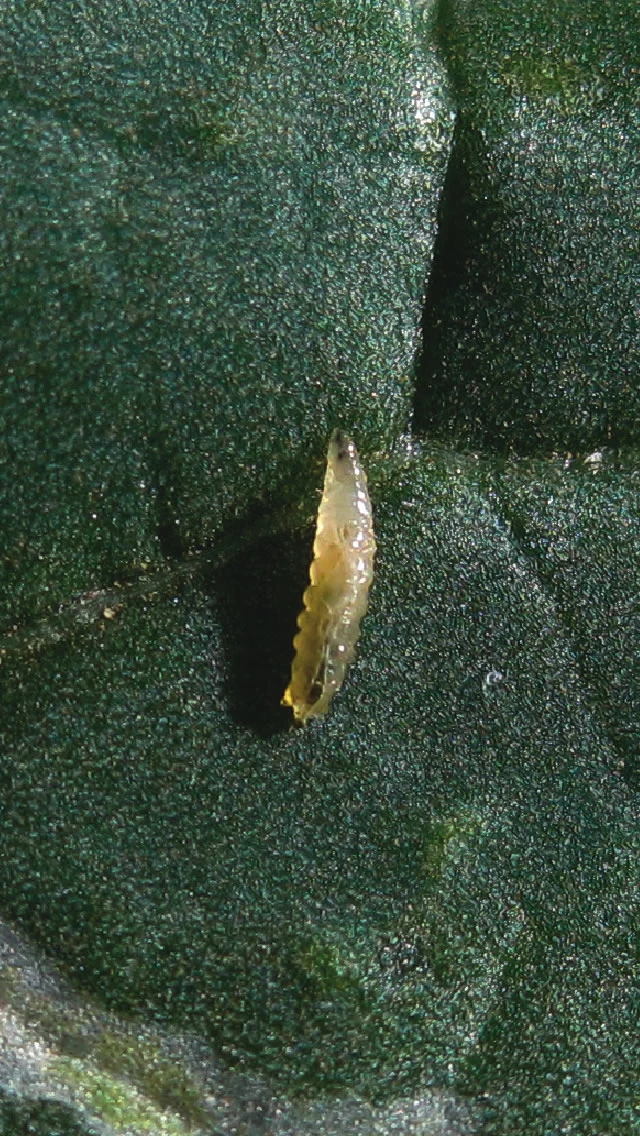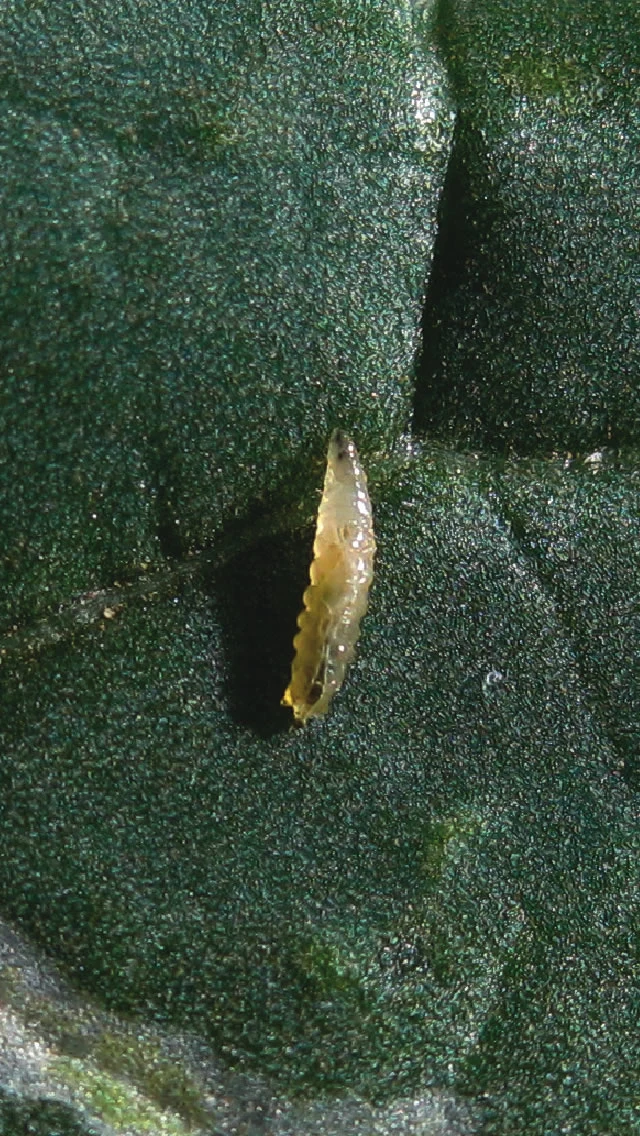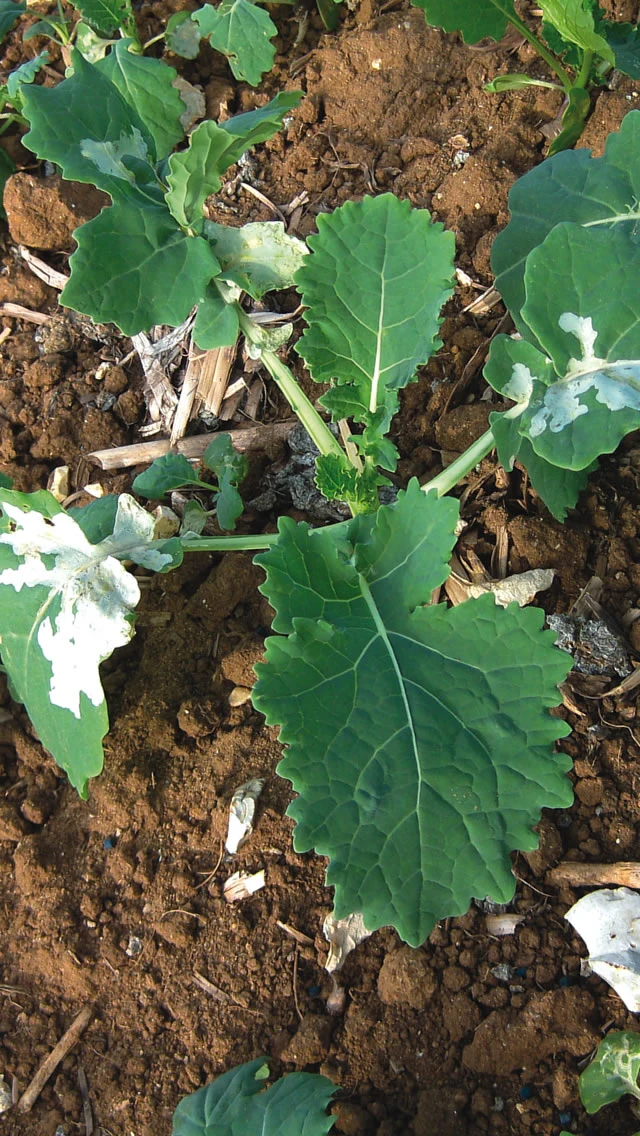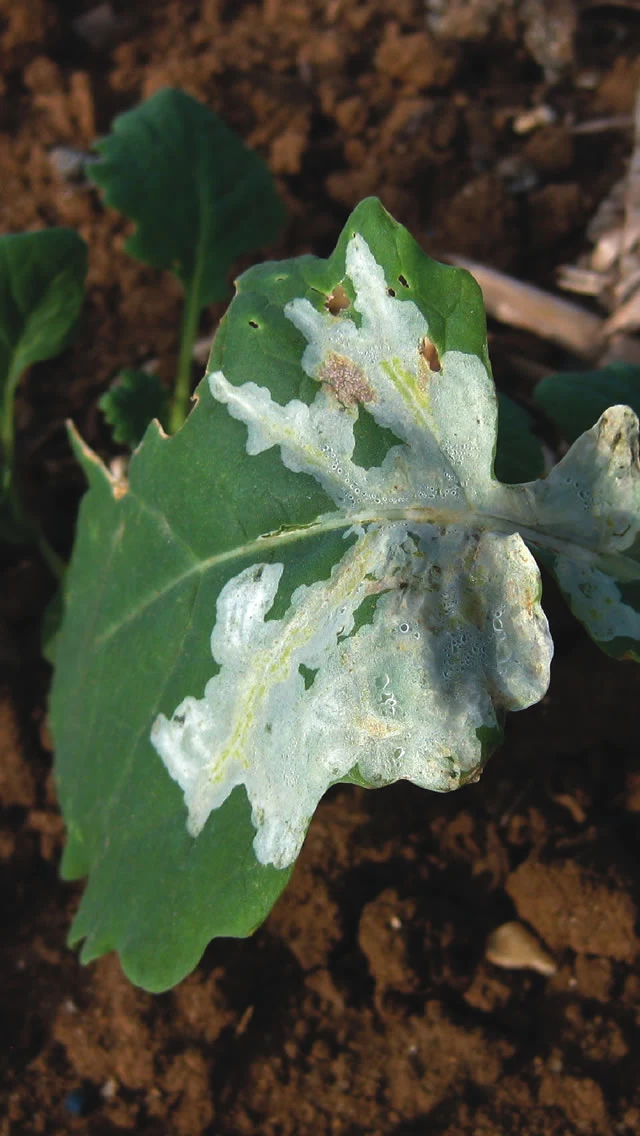
Leaf Blotch Miner
Scaptomyza flava
Identification
The larvae can be readily found in the leaf mines and are white, translucent, 4-5 mm in length with an indistinct ‘pointed’ head end.
Symptoms
The feeding tunnels of leaf miners can easily be seen giving the affected area a ‘silvery’ appearance. Whole leaves can be affected. The larvae do not tunnel into the stalks, stems and growing points which limits the damage to individual plants. Numerous larvae (6 plus) can be found feeding in each ‘mine’ at the same time. The older plant leaves are more likely to be attacked than the younger developing leaves.
Life-cycle
Eggs are laid near the leaf veins from which the larvae emerge to mine into the leaves. When fully fed they exit the leaves to pupate in the soil before the onset of colder conditions in the early winter.
Importance
The leaf blotch miner is less common than the cabbage leaf miner (Phytomyza rufipes), however the leaf blotch miner was widespread on oilseed rape in the warm dry autumn of 2009. Damage from mining can lead to leaf loss but after pupation new leaves will grow away normally without any loss of individual plants or crop yield.
Insecticidal seed insecticide treatments did not seem to be particularly effective in controlling this pest in autumn 2009 but this might have been due to the exceptionally dry conditions preventing movement of the chemical from the outside of the seed into the roots and shoots of the developing plants.
Threshold
Although potentially giving cause for concern, especially if crops are struggling to establish in adverse conditions, the larvae do not move from the leaves into the stems and growing points. As oilseed rape plants can tolerate loss of older leaves, treatment with insecticides is not normally considered to be necessary.

Leaf blotch miner larva

Leaf blotch miner damage

Close-up of leaf damage


